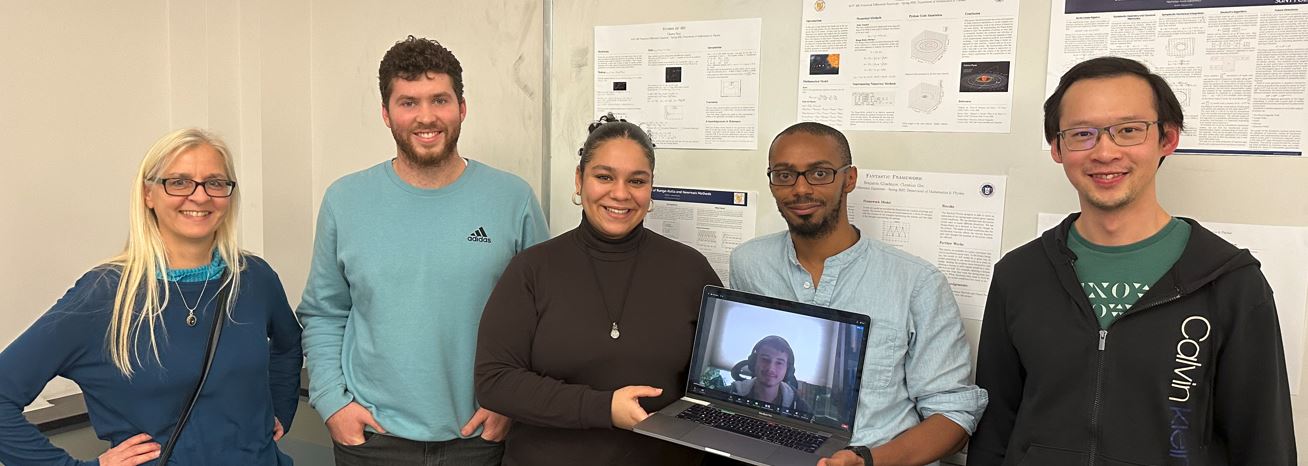If you spend time with students in Applied Mathematics Professor and Program Coordinator Andrea Dziubek’s Numerical Differential Equations (MAT 460) class, two things become abundantly clear. The first is that the focus area flexibility an Applied Mathematics degree provides is apparent in their plans post-graduation, and the second is that they share a genuine love for mathematics and the role it plays in everyday life. Here are some of their stories …
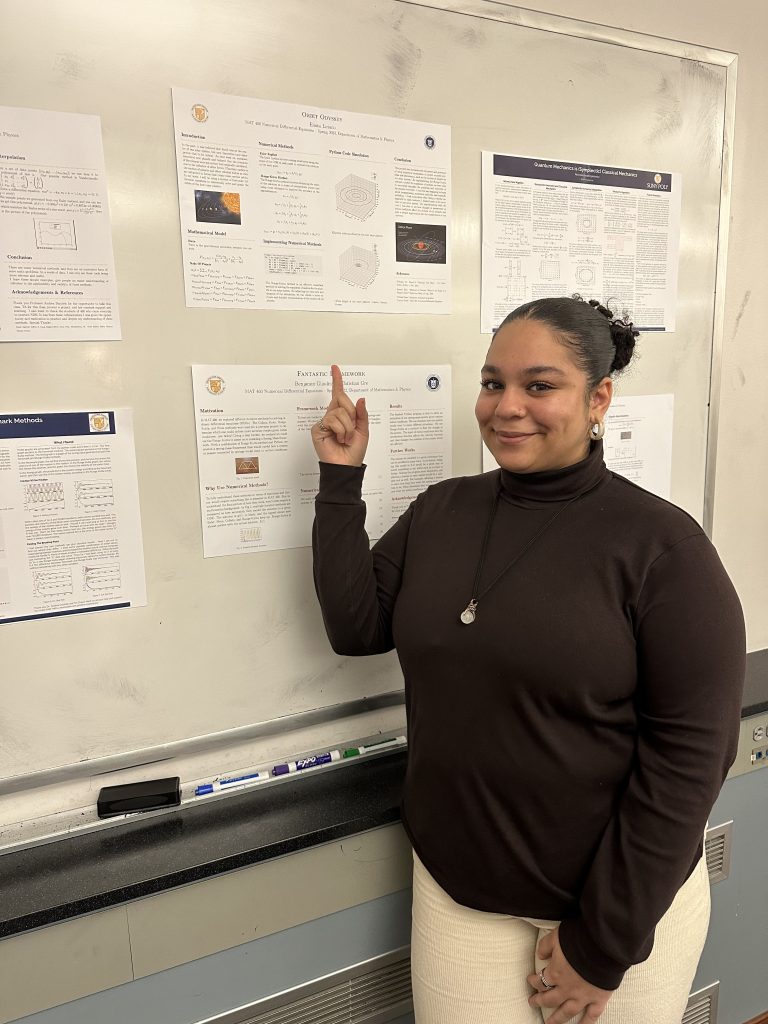
Eliana Liriano
Bronx native Eliana Liriano, who is set to graduate this May with a major in Applied Mathematics and a minor in Finance, says she has always been good at math. After attending a math camp in seventh grade that exposed her to a higher level of the subject, she knew it was what she wanted to study in college.
“Math is really interesting,” she said. “I love how it changes your view of the world. That’s how I describe it, just looking at life differently. Mathematics stands as the universal language, transcending barriers of comprehension for all entities, making it accessible and comprehensible to any discerning intellect.”
Interested in outer space, her MAT 460 project, titled the Orbit Odyssey, brings two of her passions together. It also took third place at the SUNY Poly Student Showcase last April. While she once envisioned herself as an astronaut, Liriano has plans to be a commercial pilot post-graduation.
Until then, she is enjoying her time with peers in MAT 460, which she said has become one of her favorite classes. She was initially intimidated by the coding aspects of the course, but her confidence in it has since grown exponentially. “Once I got into this class, and got to know my peers, I was like, this is really dope.”
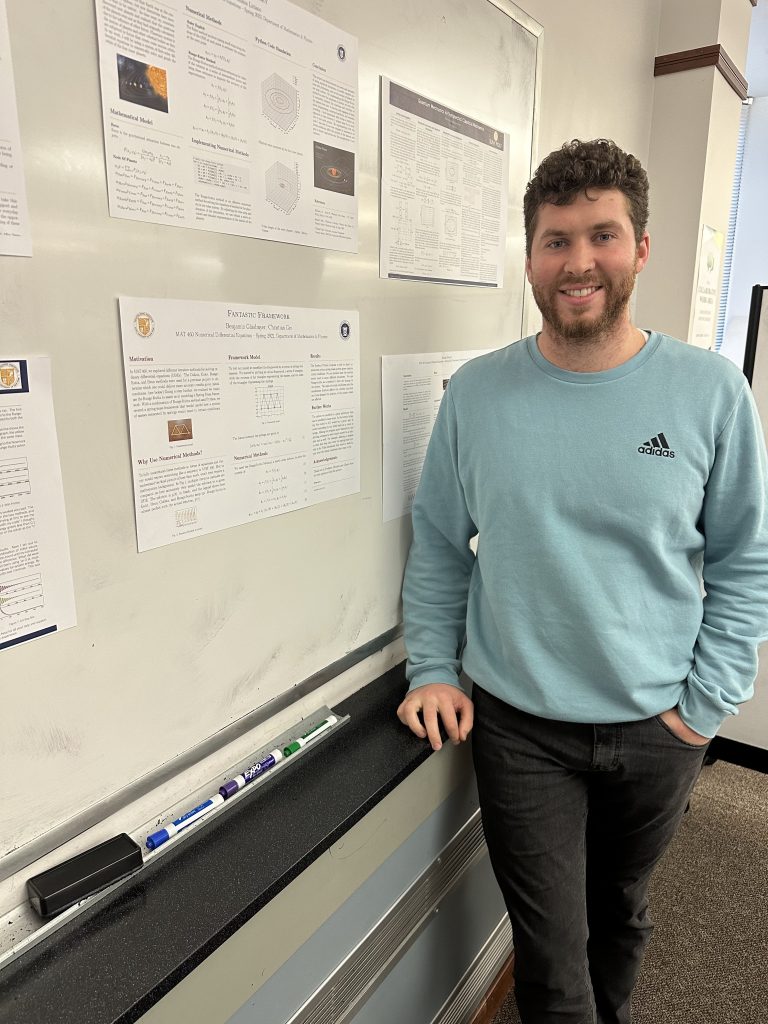
Ben Glindmyer
Utica native Ben Glindmyer’s interest in mathematics started with his admiration for his older brother who also majored in Applied Mathematics in college and his grandfather who was a mechanical engineer.
“Those are two people I probably look up to more than a lot of people in my life,” he said. “So, I kind of went that route, and I’m glad I did.”
He’s enjoyed collaborating with his peers and professors, with it feeling more like they are researchers in their field of study as opposed traditional students just spending time in the classroom.
His MAT 460 project involves creating an animation of a spring mass framework, demonstrating how it reacts when force is added.
While he is still finalizing his future plans, Glindmyer’s educational experiences at SUNY Poly, namely his applied mathematics courses and a data science class he’s currently taking, has been a catalyst of his consideration to further his education by enrolling in a graduate program.
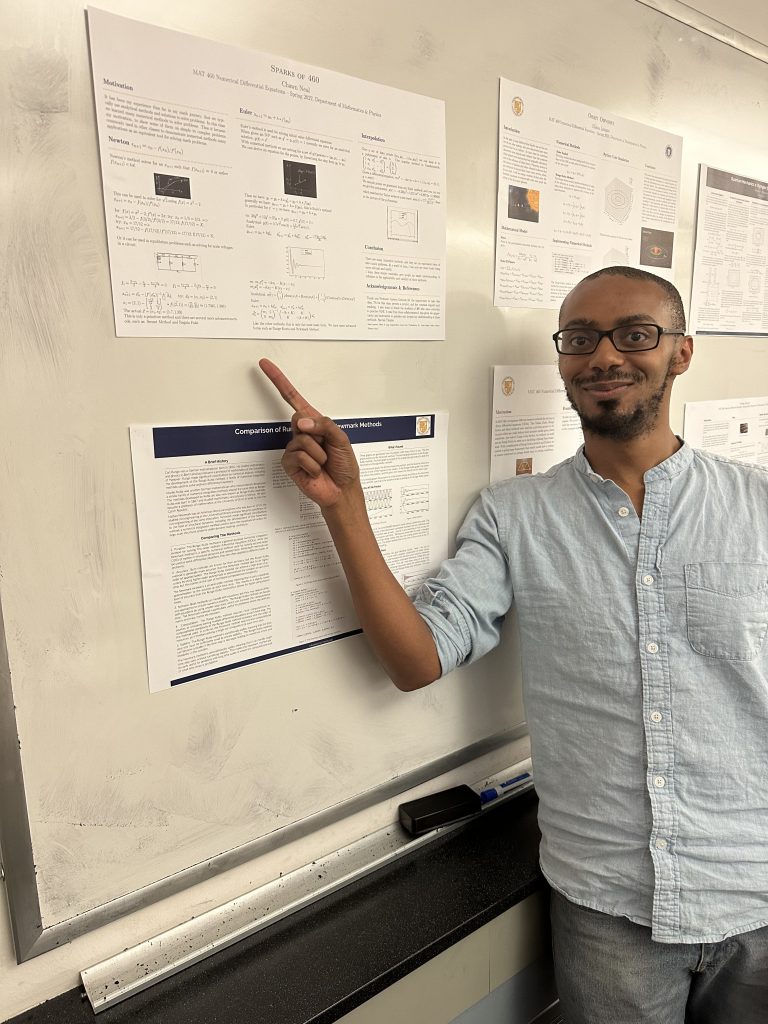
Chawn Neal
Applied Mathematics and Network and Computer Security (Cybersecurity) double major Chawn Neal, a Sullivan County native and junior, dabbled in several subjects before it became apparent that mathematics was a great fit.
“Once I started studying math, logic and geometry, everything started to click,” he said, noting that he’d eventually like to go into the field of electrodynamics and bioengineering. “I find that math is consistent. No matter how difficult it gets, in most contexts it’s easier. I might not know what a great essay is, but with math, you can clearly see why you’ve failed or passed an assignment.”
His MAT 460 project compares analytical solutions to the ones they derived from their Numerical Differential Equations class. And he notes that while he and peers are working on separate projects, there is a commonality among them.
“Even though we actually work independently on a lot of things, there are a lot of intersecting areas,” said Neal. “While it wasn’t intentionally planned, I think there’s just a natural cohesiveness, shared goals that kind of put us on this similar path.”
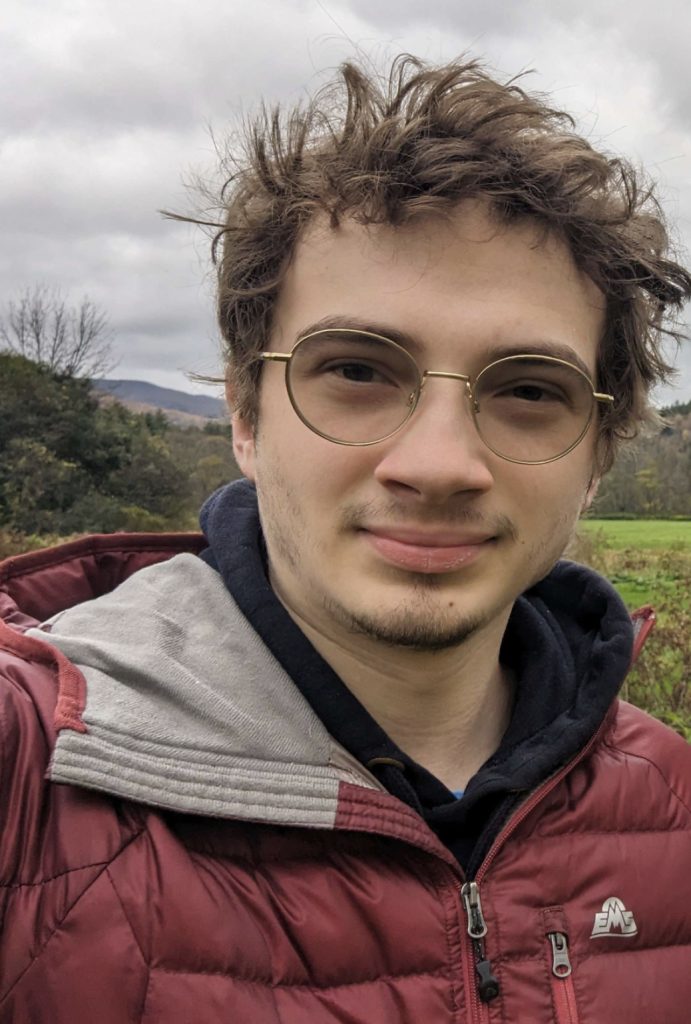
Nicholas Andrzejkiewicz
At age 14, Westchester County native Nicholas Andrzejkiewicz picked up Landau’s texts on theoretical physics and became interested in learning the basics of electromagnetism and gravity. He quickly discovered, however, that there was a mismatch in the mathematics taught at the high school level compared to what was needed to further his interests. While there is currently no physics major on campus, he added a Physics minor to his Applied Mathematics major. He’s also found the math courses he’s taken satisfying.
His MAT 460 project involved symplectic geometry, which can be turned into numerical algorithms and describe both classical and quantum mechanics, as well as mathematics, finding them to be almost identical.
He also believes that MAT 460 is one of the most important classes offered at SUNY Poly, for the way that it shows what base-level operations computers were designed to do and helps mathematics majors interact with their subject through physical examples.
“As Andrea often says, mathematics is somewhat of an art. The choices we make in our definitions of new number systems or geometric structures are partially guided by aesthetics, but as Chawn pointed out, it is constrained too; Mathematics has a way of guiding you in the right direction all on its own,” Andrzejkiewicz said. “I believe this is very different from the mathematics students and practitioners of engineering and sciences know, as it is more often to them, just a source of symbolic manipulation.”
“However, mathematicians to some degree think of the things they study as real,” he continued. “This culture of mathematics as an art is passed down here at SUNY Poly.”
Mathematics: An art form
At SUNY Poly, Applied Mathematics majors are able to apply mathematical and problem-solving skills to real world problems, developing and using a wide variety of mathematical methods in order to understand and to work with systems encountered in science and industry. Moreover, they are able to simulate the behavior of complex systems without actually having to construct expensive physical models.
Many students also work on an individual basis with faculty to pursue special interests outside of formal coursework, often leading to diverse areas such as data analysis, finance, mathematical physics, group theory, mathematical and computational modeling of problems in biomedical and material science, numerical methods, image processing, etc.
“Science and mathematics are at the heart of everything,” explains Dziubek. “It’s at the heart of engineering, computer science, the arts and sciences … Our students go into many different areas, and have had a lot of success, both in the workforce and in attending graduate school.”
To learn more about Applied Mathematics and the MAT 460 course, click here.
